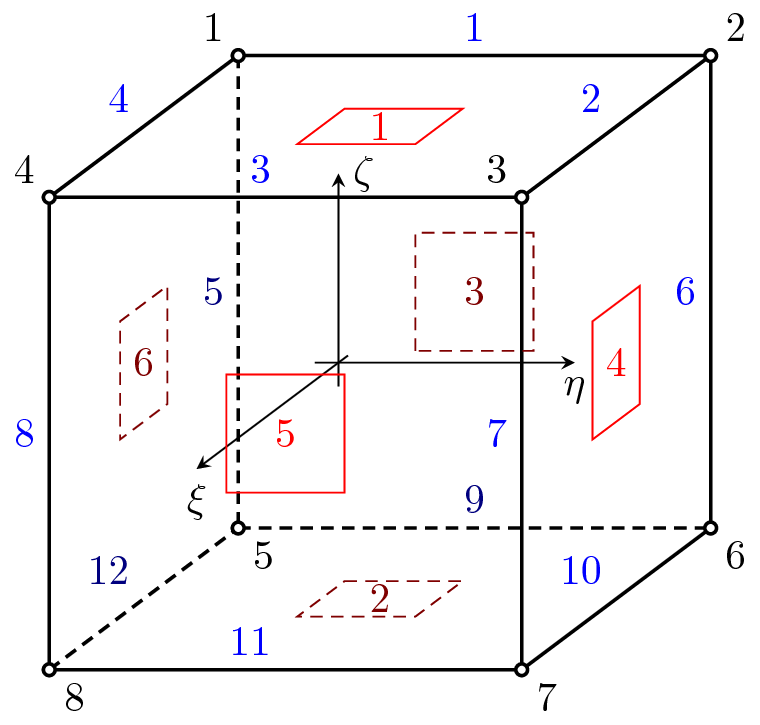
Represents isoparametric four-node tetrahedral element. Each node has 1 degree of freedom. The same numbering convection is adopted as in mechanics, see Fig. 14. The element features are summarized in Table 52.
| Keyword | Tetrah1ht |
| Description | Isoparametric, four-node tetrahedral element with linear approximation for heat transfer problems |
| Specific parameters | [NIP #(in)] |
| Parameters | NIP: allows to change the default number of integration point used. |
| Unknowns | Single dof (T_f - temperature) is required in each node. |
| Approximation | Linear approximation of temperature. |
| Integration | Integration using gauss integration formula in 1 (the default), or 4 integration points. The default number of integration point used can be overloaded using NIP parameter. |
| Loads | Body loads are supported. Boundary loads are supported and computed using numerical integration. The side and surface numbering is shown in Fig. 14. |
| Features | - |
| CS properties | - |
| Status |
|
Represents isoparametric eight-node brick/hexahedron finite element for heat transfer problems. Each node has 1 degree of freedom. The element features are summarized in Table 53.

| Keyword | Brick1ht |
| Description | Isoparametric, hexahedral 3D element with linear approximation for heat transfer problems |
| Specific parameters | [NIP #(in)] |
| Parameters | NIP: allows to change the default number of integration point used. |
| Unknowns | Single dof (T_f - temperature) is required in each node. |
| Approximation | Linear approximation of temperature. |
| Integration | Integration using gauss integration formula in 8 (the default), or 27 integration points. The default number of integration point used can be overloaded using NIP parameter. |
| Loads | Body loads are supported. Boundary loads are supported and computed using numerical integration. The side and surface numbering is shown in fig. (23)). |
| Features | - |
| CS properties | - |
| Status |
|
Represents isoparametric eight-node quadrilateral finite element for heat and mass (one constituent) transfer problems. Two dofs (T_f - temperature and C_1 - concentration) are required in each node. Linear approximation of temperature and mass concentration. Other features are similar to Brick1 element, see section 3.3.2.
Implementation of quadratic 3d 20-node finite element. Each node has 1 degree of freedom. See section 2.8.3 for node numbering order and order of faces. The element features are summarized in Table 54.
| Keyword | QBrick1ht |
| Description | Isoparametric, hexahedral 3D element with quadratic approximation for heat transfer problems |
| Specific parameters | [NIP #(in)] |
| Parameters | NIP: allows to change the default number of integration point used, possible values are 8, 27 (default) and 64. |
| Unknowns | Single dof (T_f - temperature) is required in each node. |
| Approximation | Quadratic approximation of temperature and geometry.. |
| Integration | Integration using gauss integration formula in 8, 27 (default), or 64 integration points. The default number of integration point used can be overloaded using NIP parameter. |
| Loads | - |
| Features | - |
| CS properties | - |
| Status |
|
The same element as QBrick1ht for heat and mass (one constituent) transfer problems. Two dofs (T_f - temperature and C_1 - concentration) are required in each node. Linear approximation of temperature and mass concentration. Other features are similar to QBrick1ht element, see section 3.3.4.